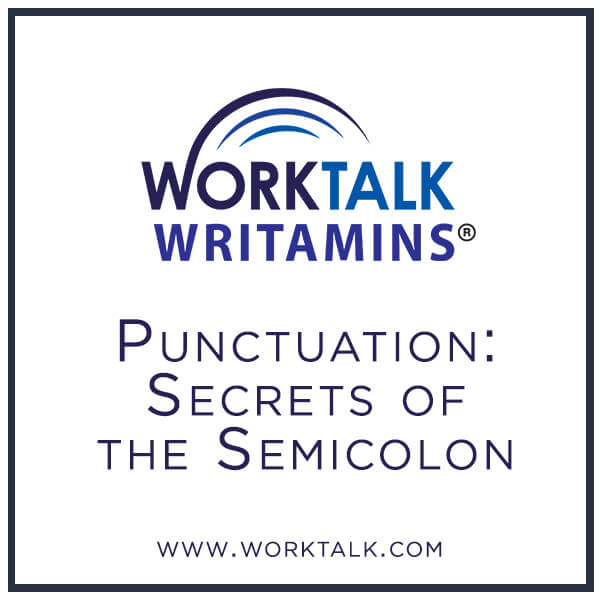
Many people suffer from secret feelings of stupidity because they don’t know how to use the semicolon. They imagine that everyone else knows what to do with this sophisticated mark of punctuation—and that they must have been absent or dreaming on the one day of school when the teacher explained it. Since they assume that everyone else knows the secret of the semicolon, they are usually too embarrassed to admit their own ignorance. The truth is that many people are murky about how to use the semicolon correctly and the semicolon is incredibly easy to use.
A semicolon has three major functions:
1. It connects two independent clauses that are logically related and that are not joined by a conjunction. (An independent clause has a noun/subject and a verb/predicate and can stand alone.)
Give without remembering; take without forgetting.
2. It separates items on a list, especially when the items on the list contain commas.
We visited the following cities: Paris, France; London, England; Rome, Italy; and Geneva, Switzerland.
3. It separates independent clauses if there are commas within the clauses.
We own a sailboat, a catamaran, and a motor boat; still, our favorite maritime activity is lolling around on deck.
Using the Semicolon with Conjunctive Adverbs
The semicolon may be used alone to separate independent clauses; however, it is often used with special connecting words called conjunctive adverbs. When used with these words, the semicolon follows a pattern: semicolon-connecting word-comma. When you use the semicolon with these words, you must put a comma after the conjunctive adverb.
also
nevertheless
still
meanwhile
afterwards
then
next
however
indeed
instead
accordingly
similarly
in addition
in fact
furthermore
moreover
consequently
therefore
thus
as a result
first, second,…
He seems like a nice person; however, he is an axe murderer.
They do not pay their bills; therefore, we will no longer ship to them.
You are certainly not entitled to an inheritance; moreover, I am cutting off your allowance.
He trashed his manager in a company-wide email; as a result, he was fired.
How to Tell if You Have Used the Semicolon Correctly
Using the semicolon to separate items on a list or within a list is fairly straightforward. When you use the semicolon to punctuate a sentence (not a list), you should be able to replace it with a period. The words on the left and the right sides of the semicolon must be able to stand alone meaningfully without any further revision.
In short, the semicolon:
- Functions like a conjunction
- Separates two independent clauses
- Separates items on a list, especially when the list was introduced by a colon or the list items contain commas.
Never let yourself be intimidated by a semicolon. It is just a punctuation mark. Period.
